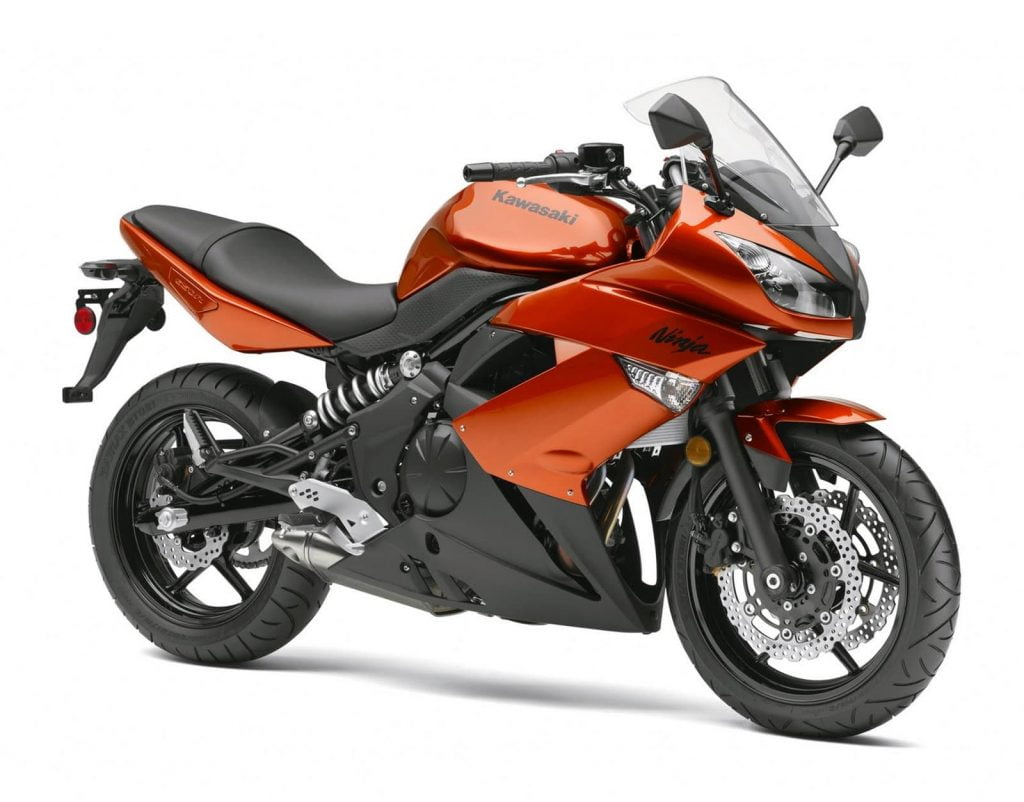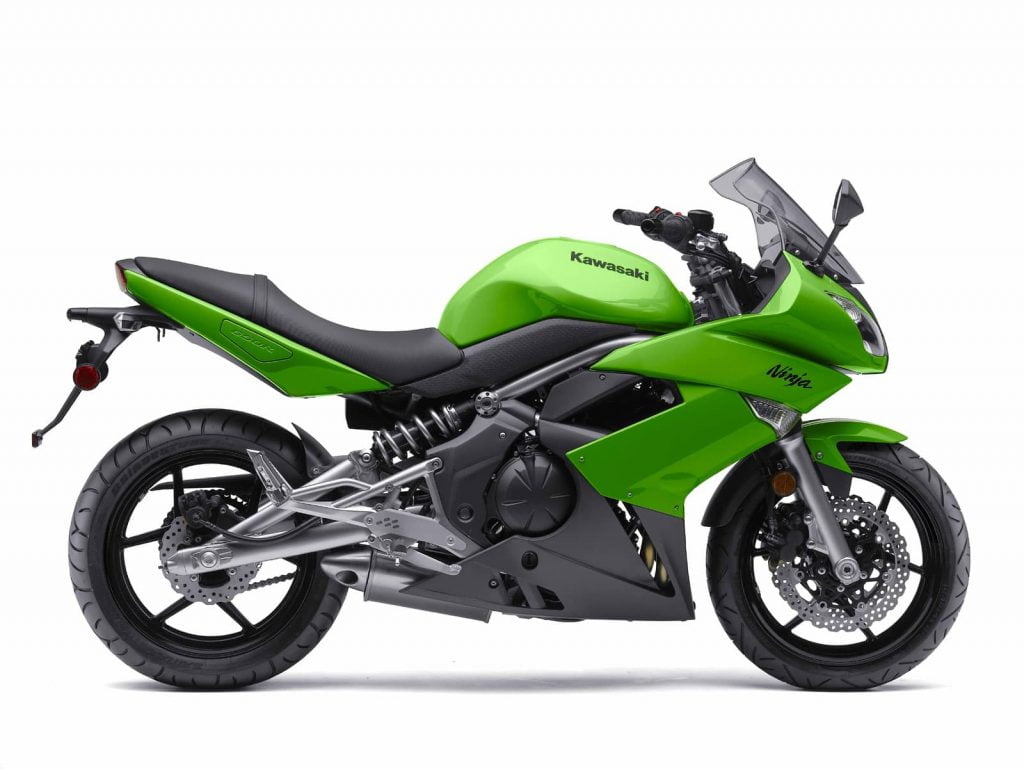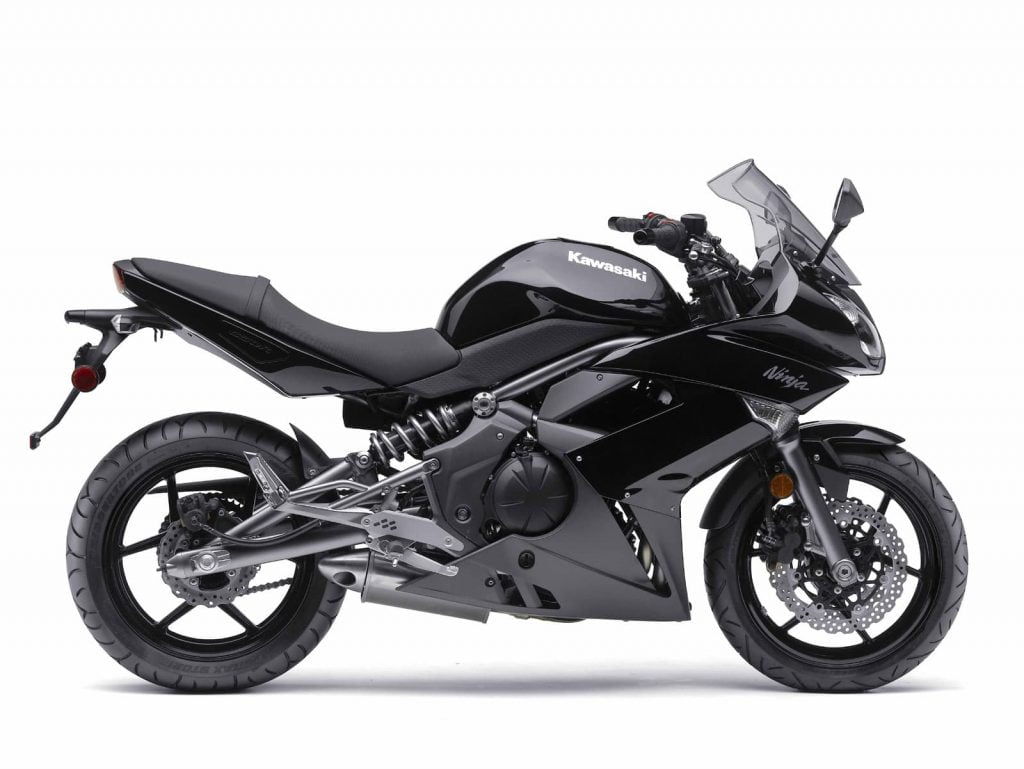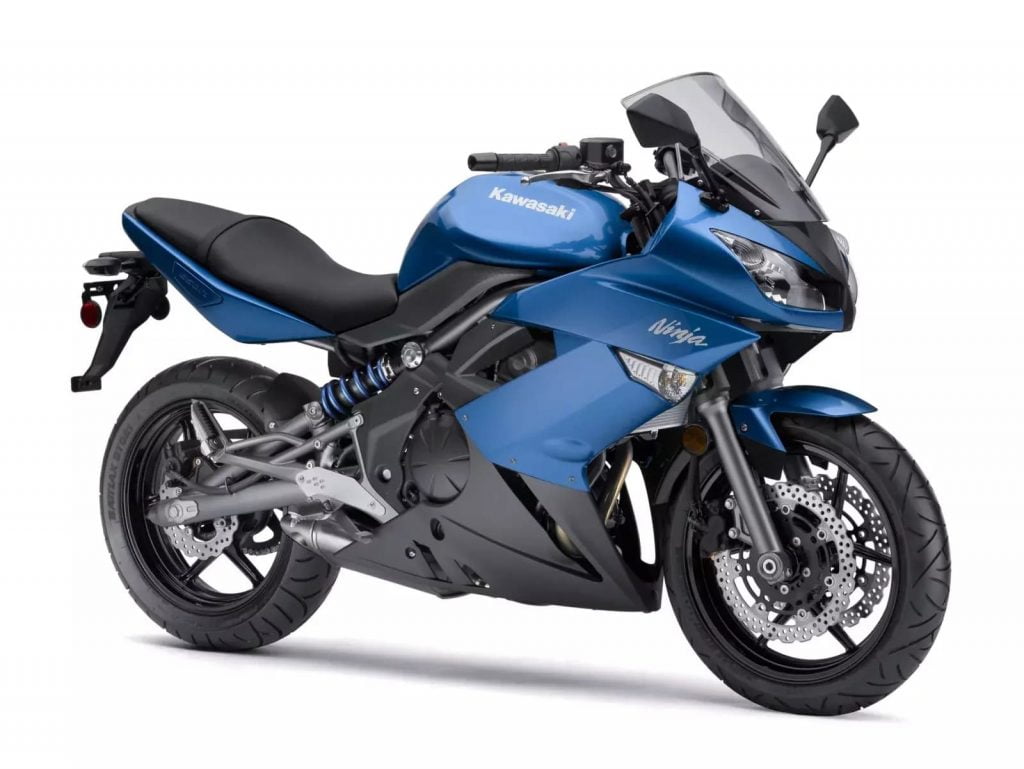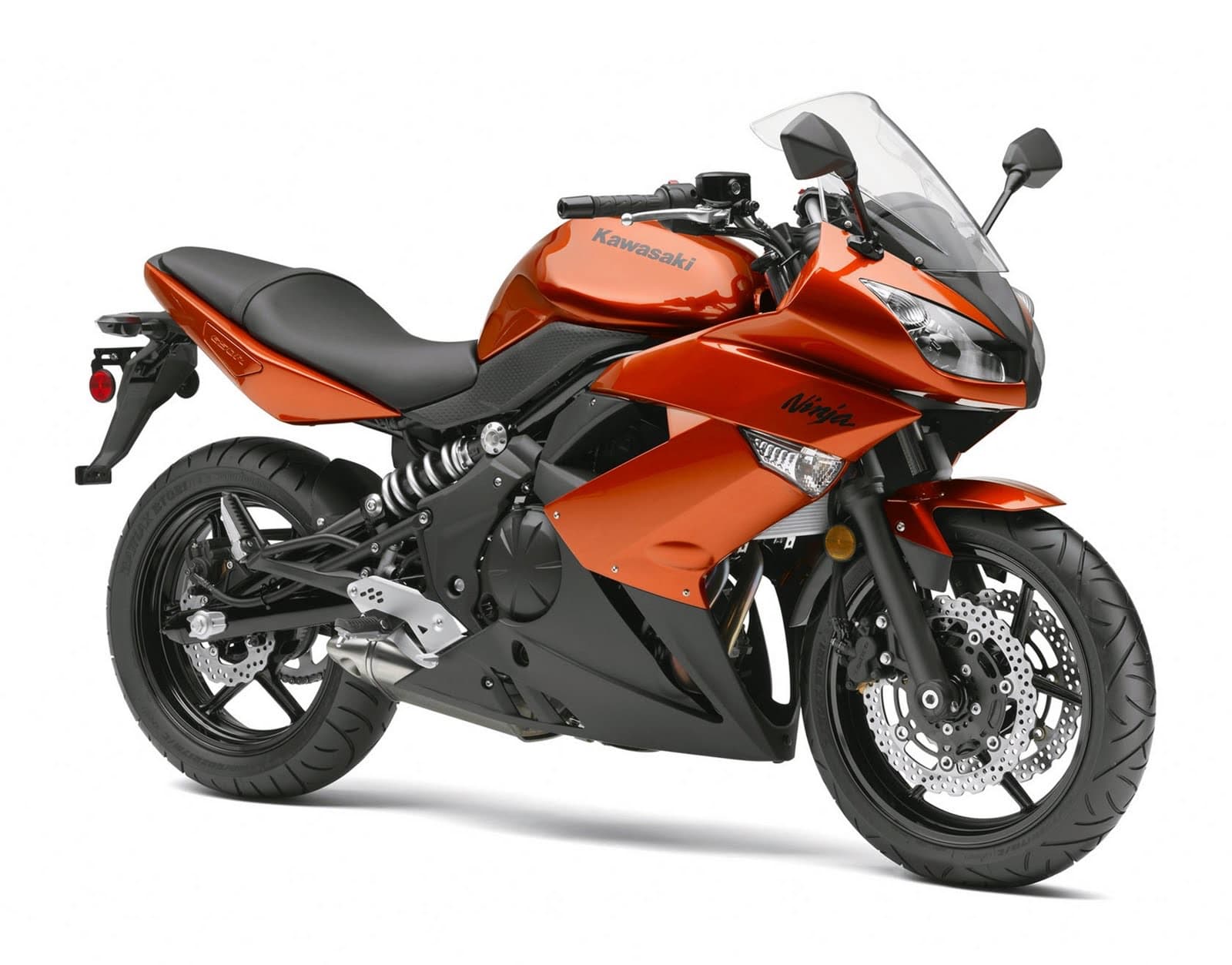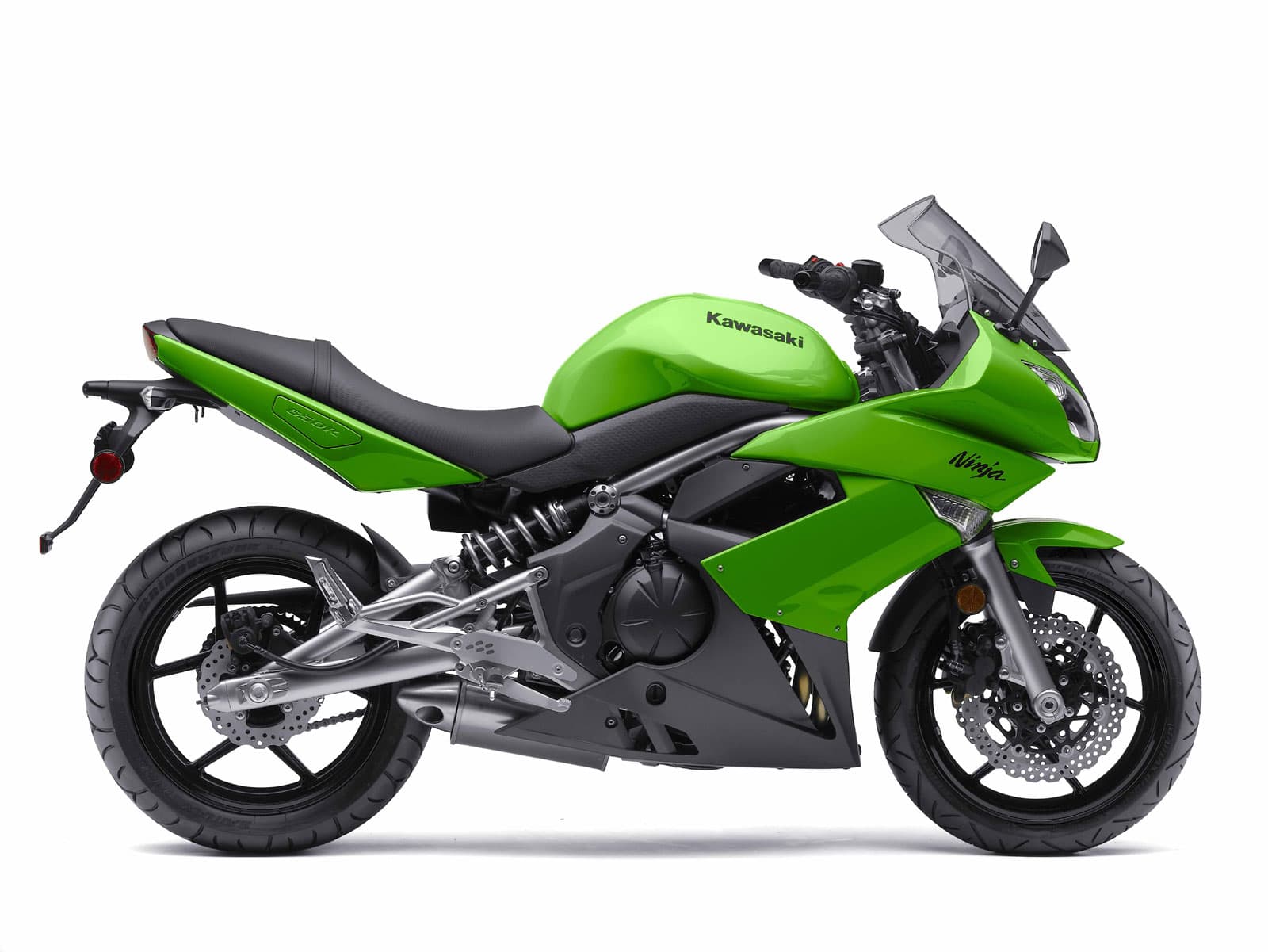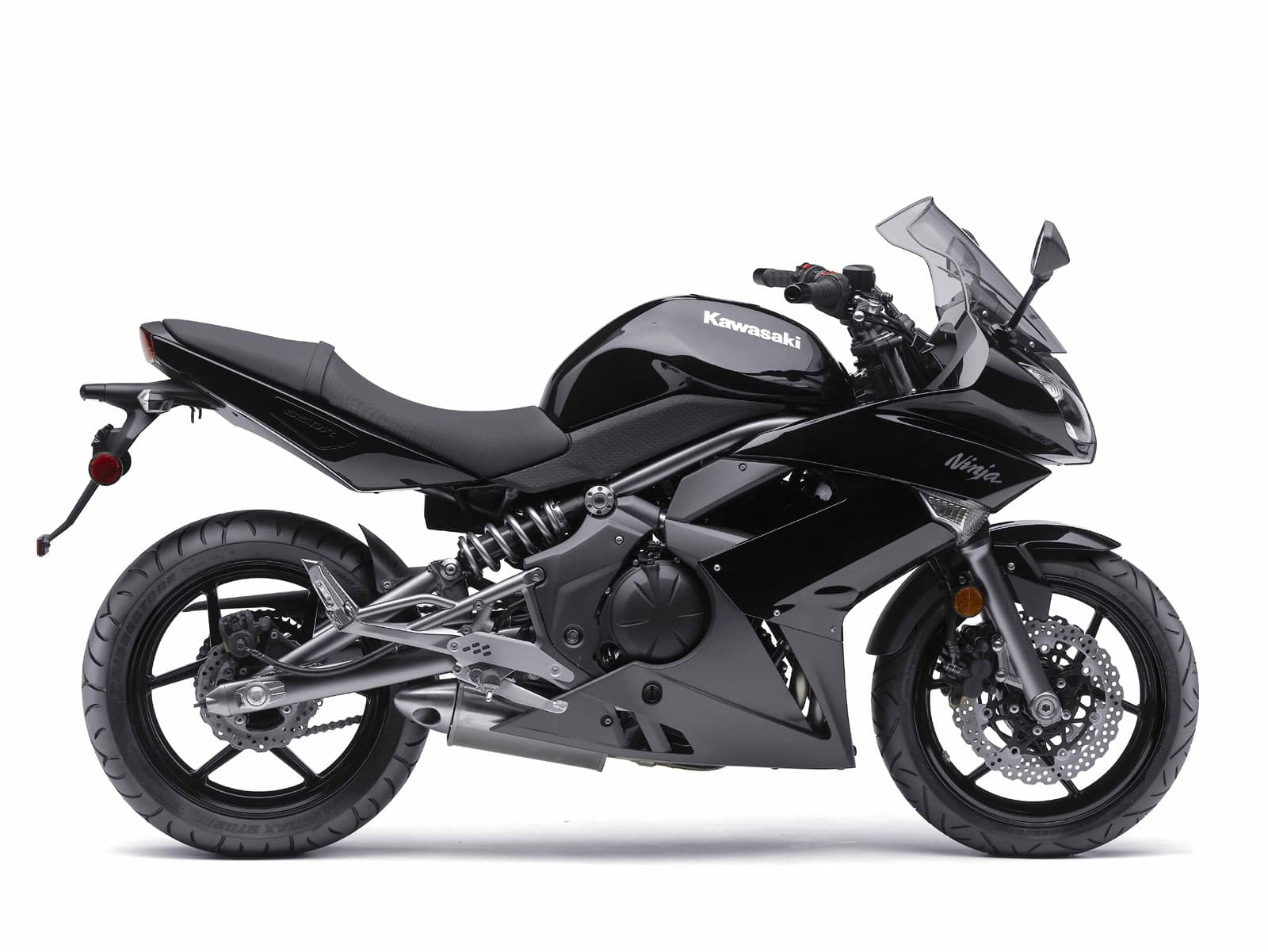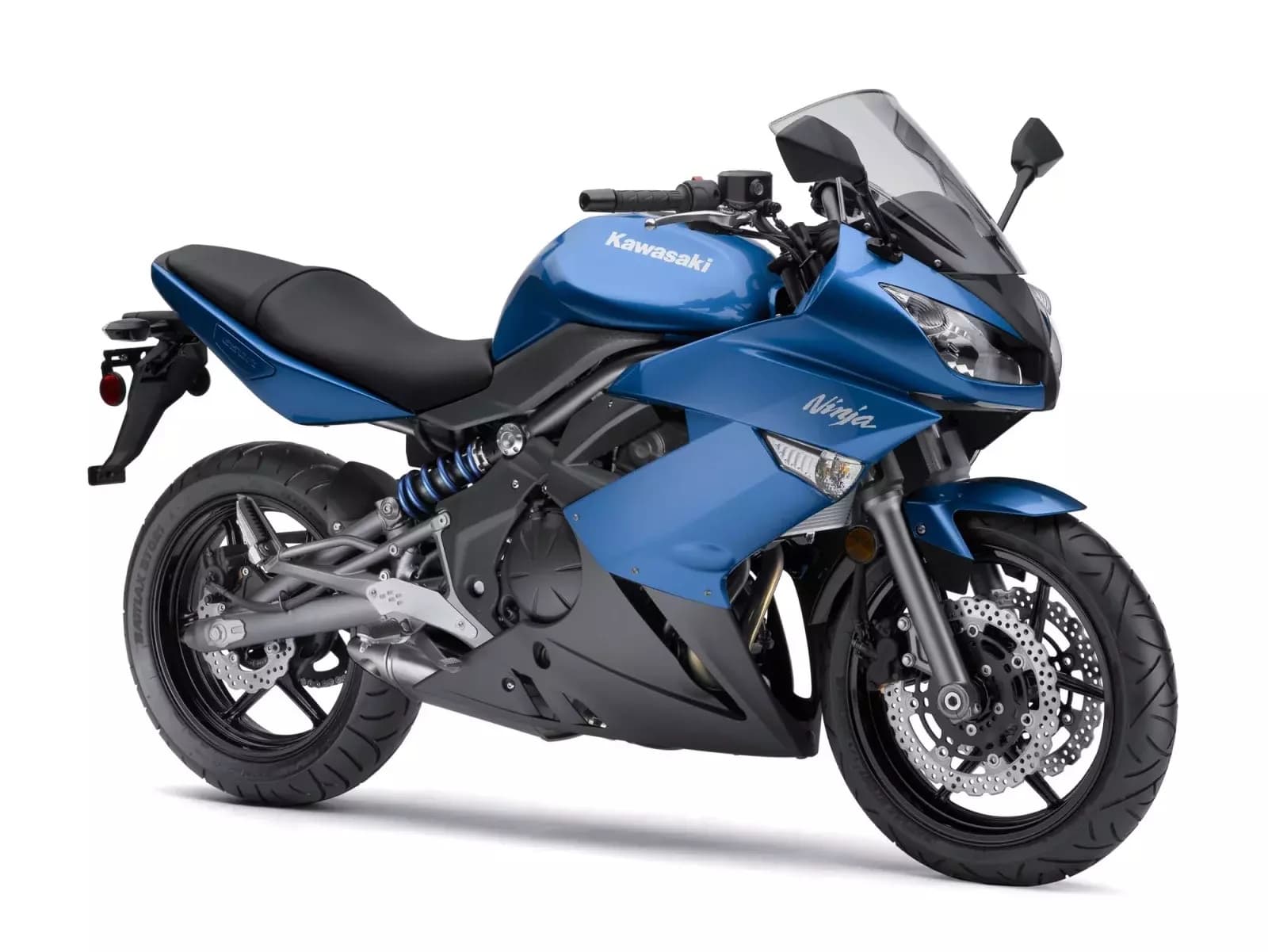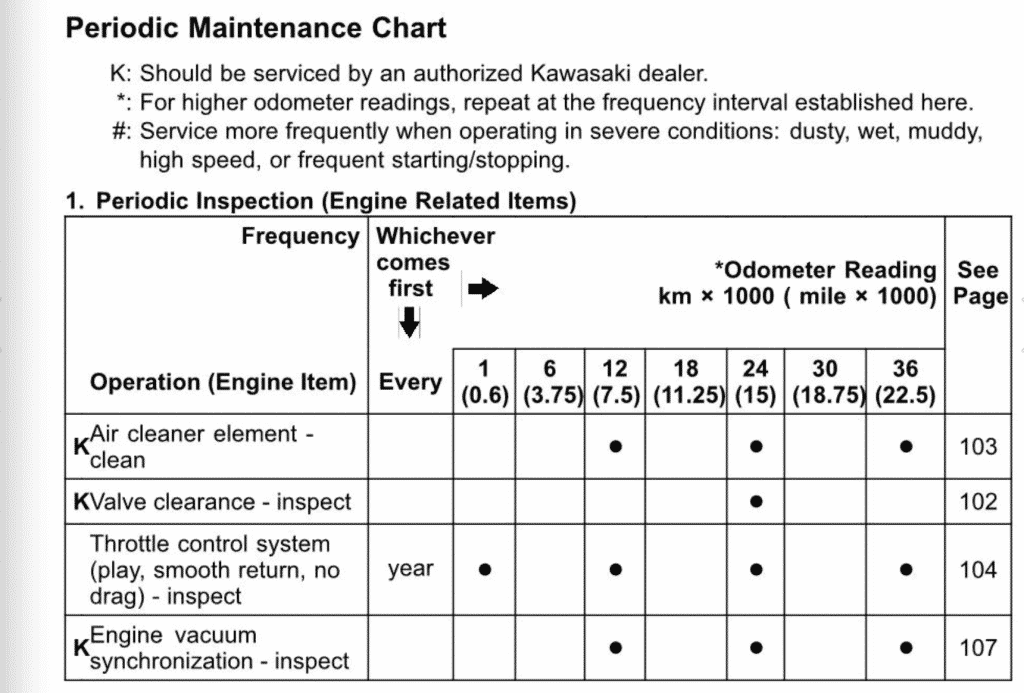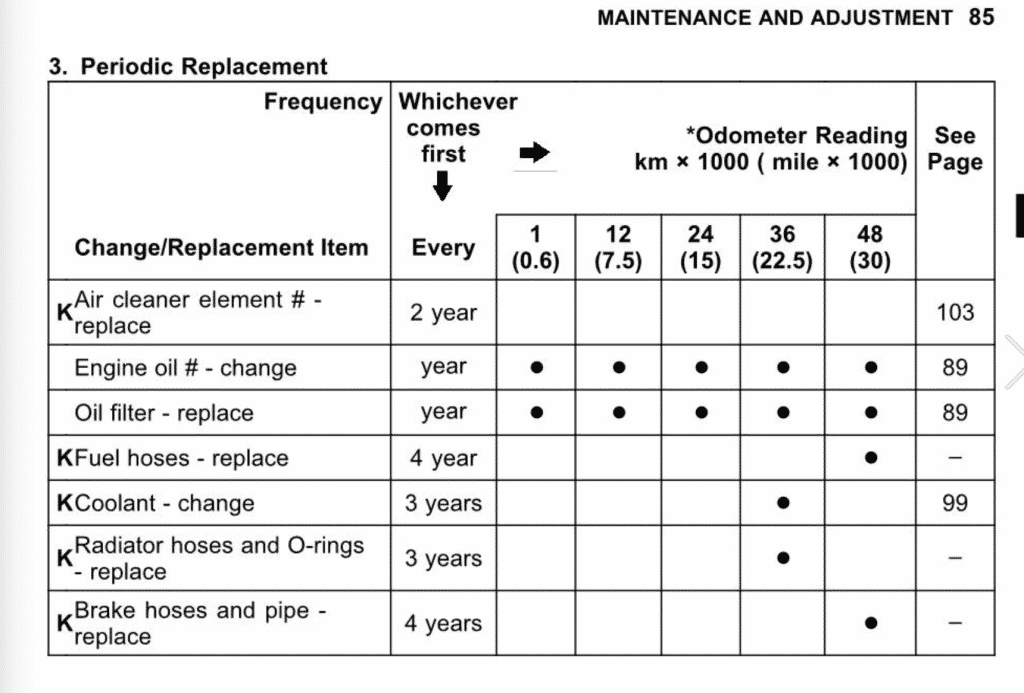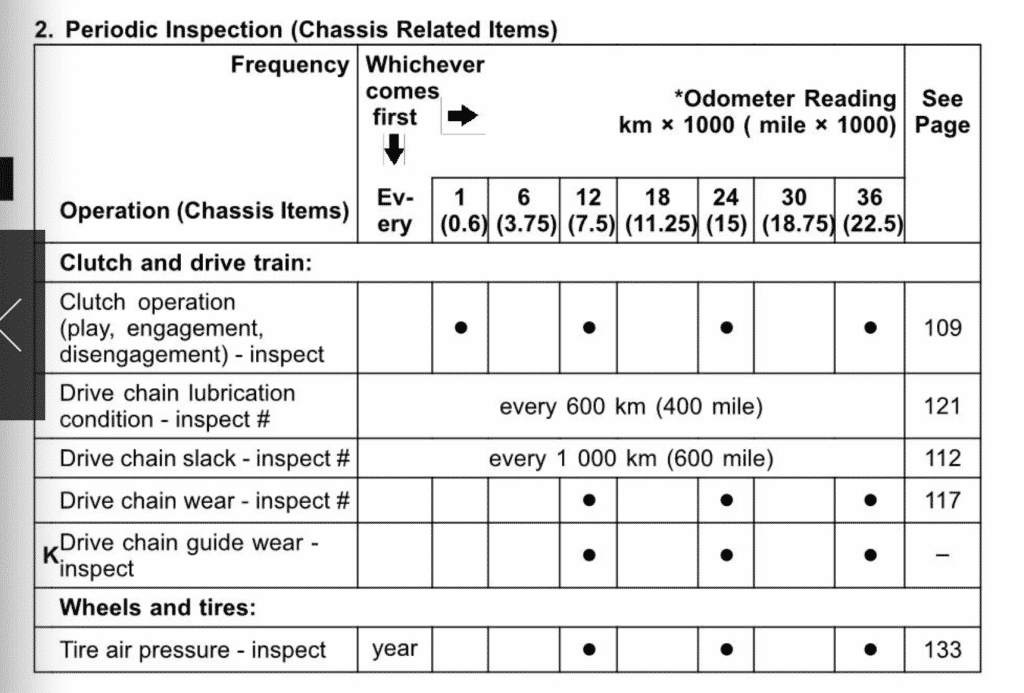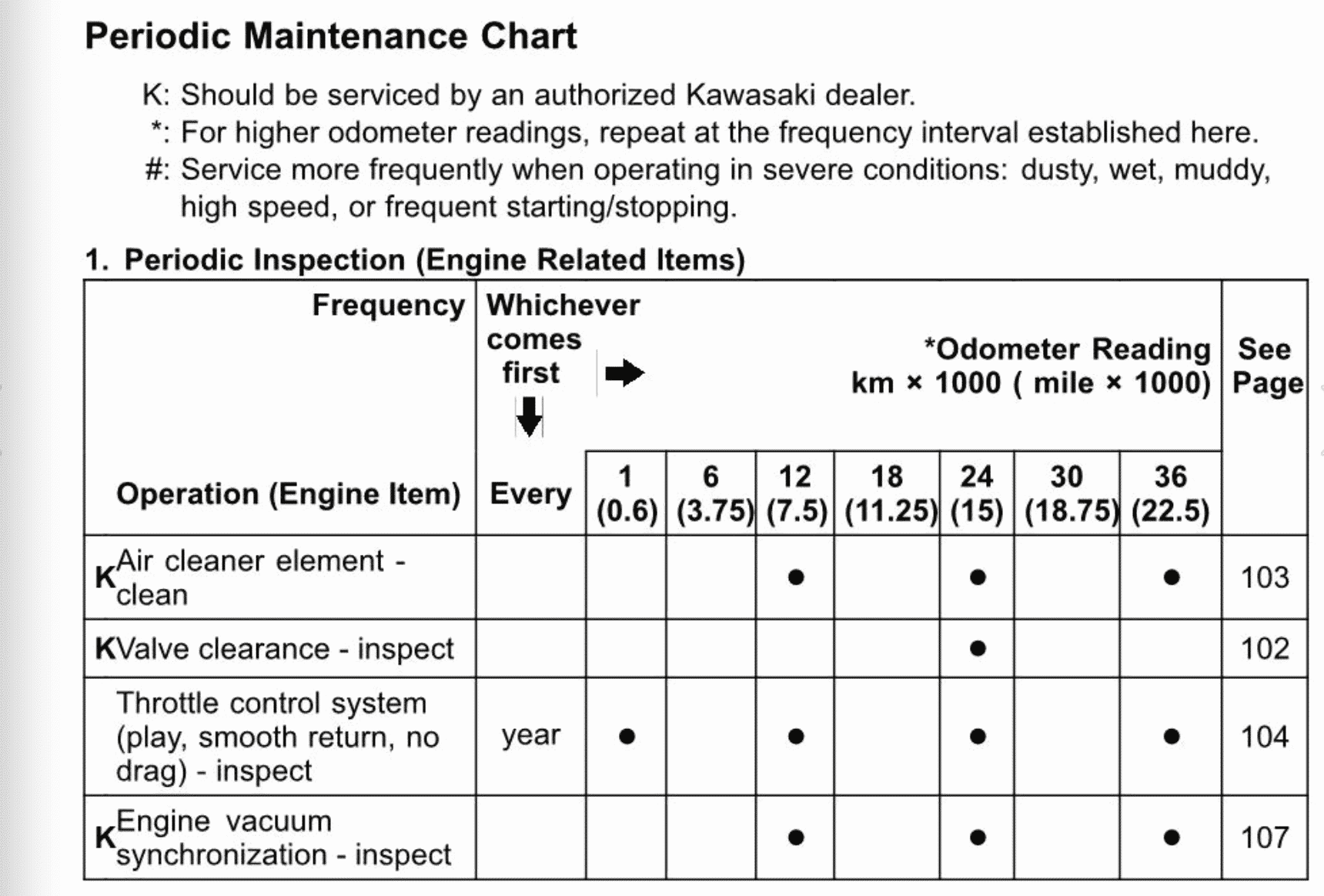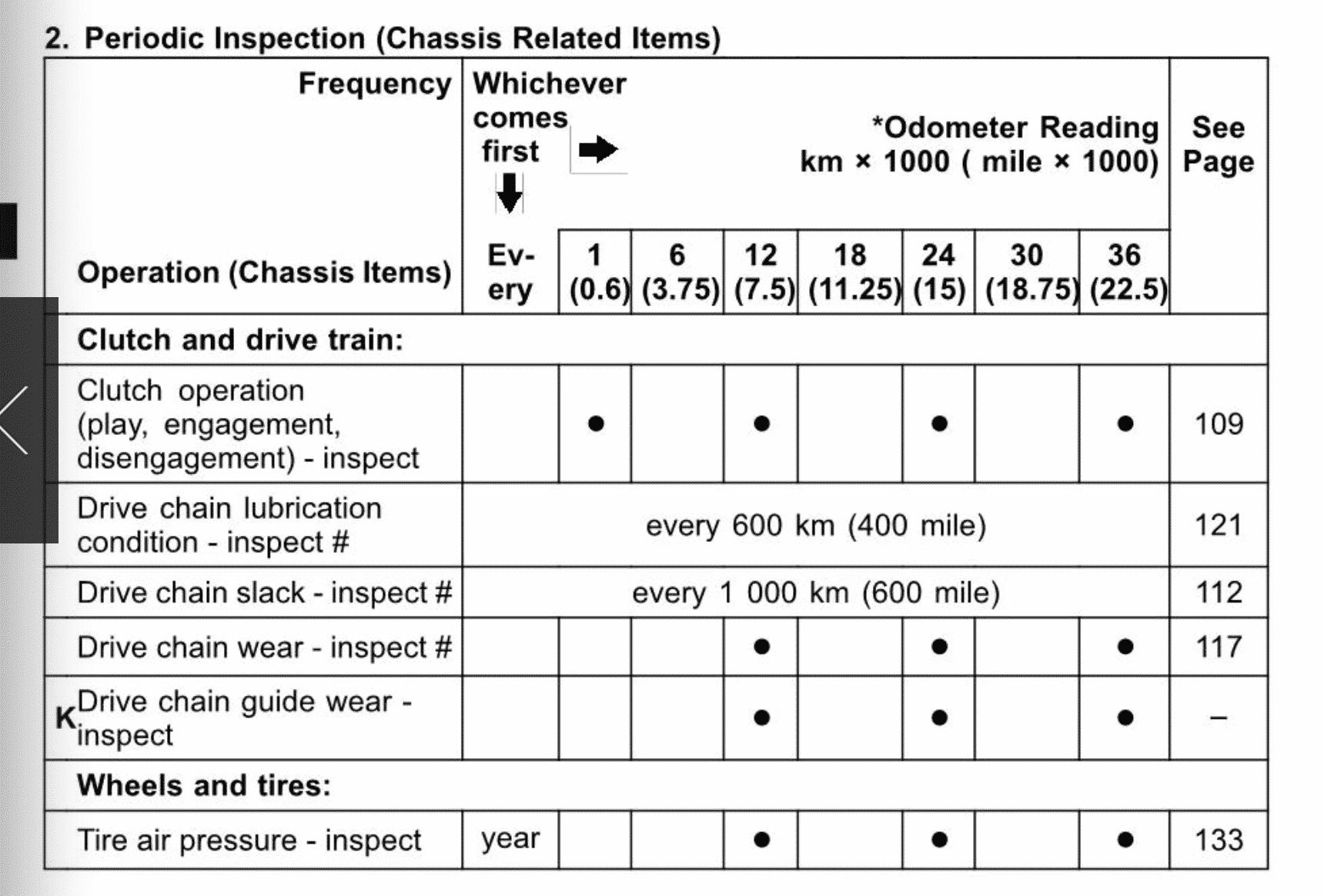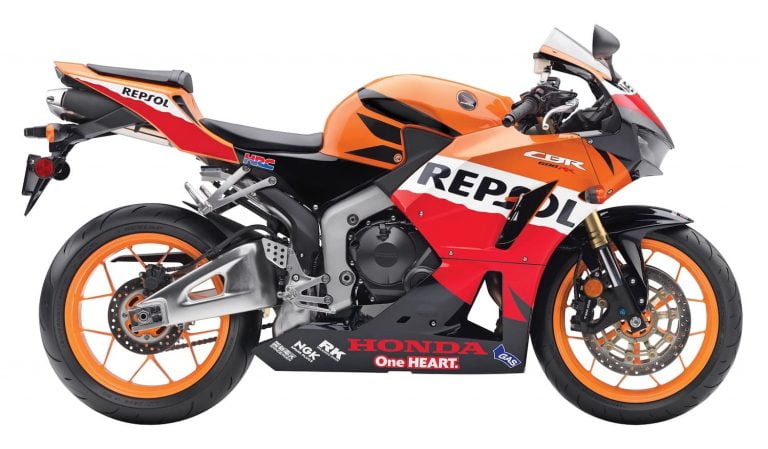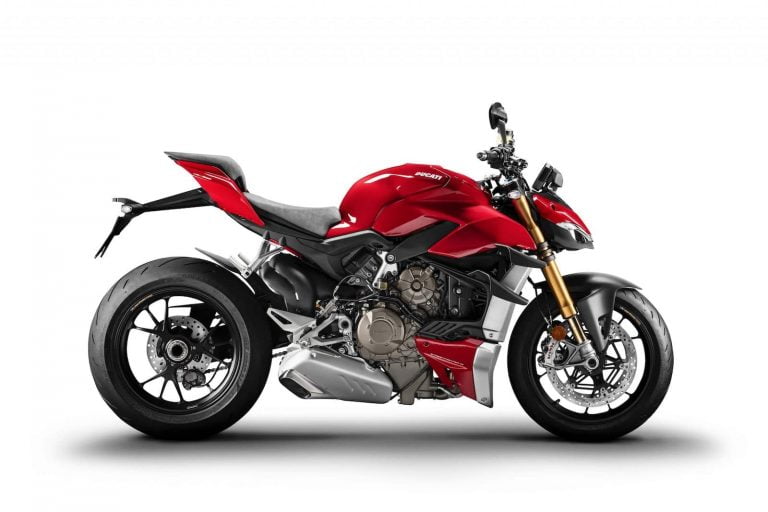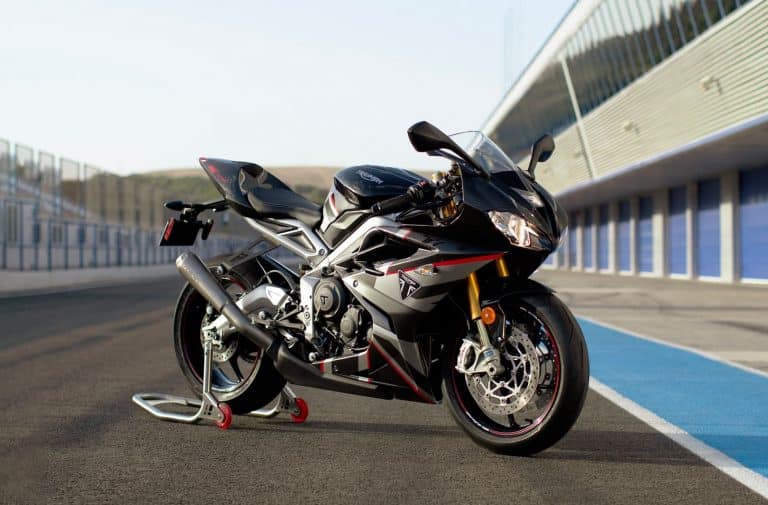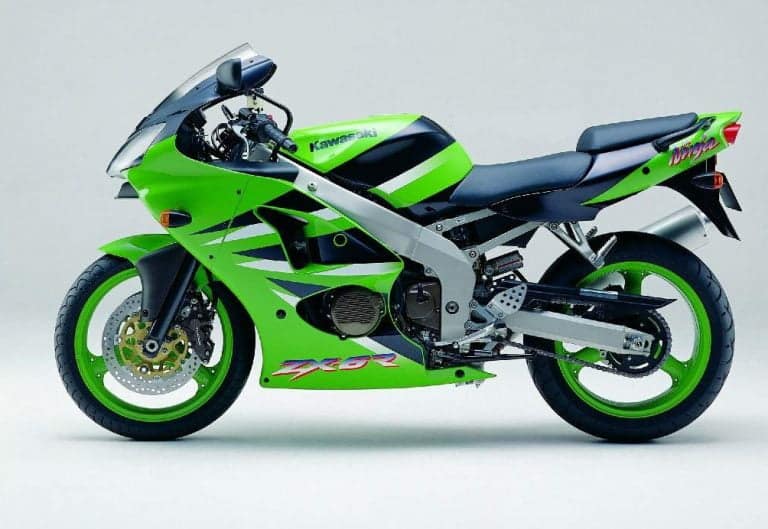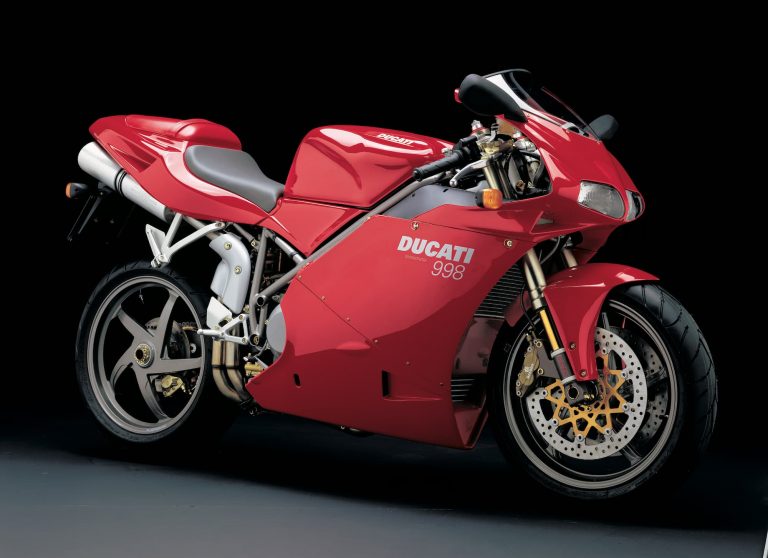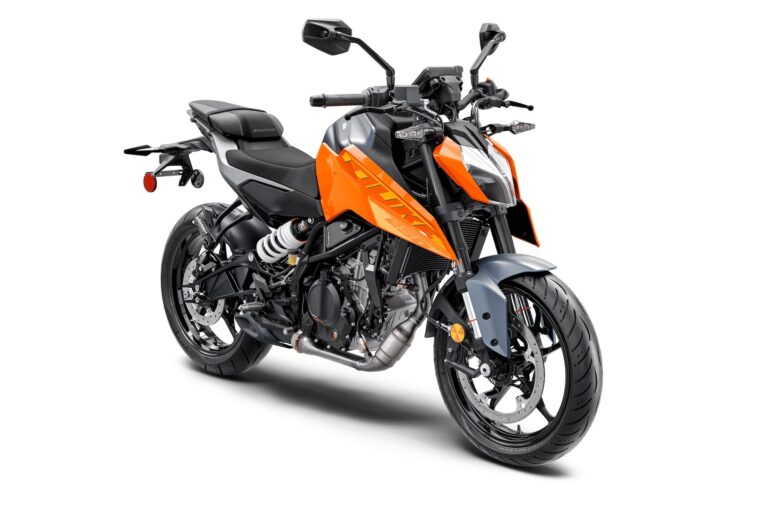Kawasaki Ninja 650 (ER-6F, 2009-2011) Maintenance Schedule and Service Intervals
This is the maintenance schedule with associated service intervals for the Kawasaki Ninja 650, also known as the ER-6F or EX650, and previously known as the Kawasaki Ninja 650R.
We extracted the information below from the manual for the ER-6F (see the bottom for references), simplifying it into a more modern and easier-to-follow format.
The Kawasaki Ninja 650/ER-6F is a parallel twin motorcycle with a fairing. It’s the sportier stablemate of the naked ER-6N, and later the Z650, which is otherwise identical. They even both have handlebars, which is quite unusual for a motorcycle with a fairing.
The Kawasaki Ninja 650 has gone through a few major updates since launch in 2006.
- 2006-2008 Kawasaki Ninja 650R, a.k.a. ER-6F/EX-6: The first base model. Made 53 kW (71 hp) @ 8,500 rpm, and weighed 208 kg (461 lb) wet. Twin gauges.
- 2009-2011 Kawasaki Ninja 650R a.k.a. ER-6F: First US imported model. Revised first edition with more midrange and better engine cooling. Reduced vibration from rubber engine and handlebar mounts. Wider seat, taller fairing. Big LCD (no tachometer dial) with red backlighting.
- 2012-2016 Kawasaki Ninja 650: All new bodywork, wider handlebars, new analogue tachometer + digital LCD with more information.
- 2017+ Kawasaki Ninja 650: New lightweight trellis frame and lighter engine — bike is 19 kg (42 lb) lighter. No side-mounted shock. New slipper clutch. More aggressive bodywork. Slightly lower top-end power due to emissions restrictions.
During the years, almost nothing has changed with the engine — though a few parts have (e.g. the air filter). Those are noted below.
This site has links for things like oil and spark plugs from which we earn a commission (which unfortunately nobody can save, not even us). If you appreciate this work, then please use those links. Thanks!
Service Intervals for the Kawasaki Ninja 650
Generally speaking, Kawasaki Ninja 650 has 7500 mile / 12000 km or annual service intervals. Every service, change the oil and filter, and also change the spark plugs.
Every 15000 miles / 24000 km, do a valve service. The Ninja 650 is a parallel twin, one of the easier multi-cylinder formats of motorcycle to service.
You also need to regularly service the
- Chain — cleaning it, lubricating it, and checking / adjusting tension
- Brake fluid — checking the level and replacing it periodically
- Coolant — checking the level and replacing it periodically
The Ninja 650 is a highly reliable motorcycle. It’s likely to die only from neglect or abuse!
What you need to service the Kawasaki Ninja 650
If you’re servicing the Kawasaki Ninja 650, firstly, you might need these common motorcycle maintenance tools (thinks like an oil filter wrench, catch pan, etc.).
But aside from that, you’ll need these specific items to maintain the Kawasaki Ninja 650.
| Part | Kawasaki Ninja 650 (2009-2011) Spec |
|---|---|
| Oil | You need 1.9L (1.8 US qt) of SAE 10W-40 engine oil “with API SG, SH, SJ, SL or SM with JASO MA, MA1 or MA2 rating”, preferably Kawasaki 10W-40 Engine Oil.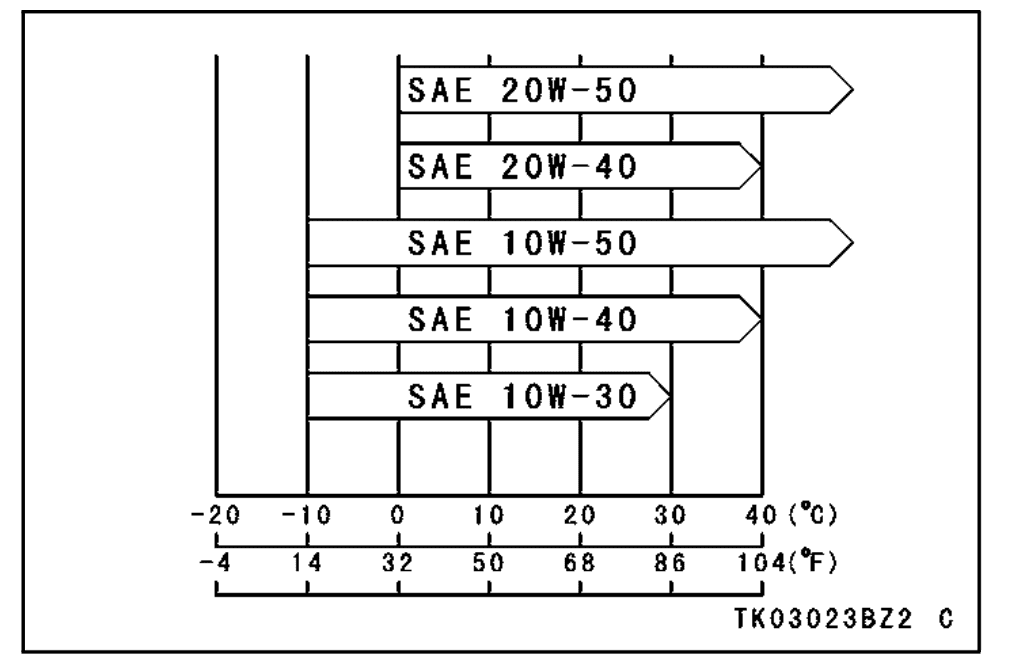 Don’t over-torque the drain bolt (spec is 30 Nm/22 lb-ft per the manual) — use a torque wrench if you don’t have experience with how much torque is enough. |
| Oil filter | Oil filter is part 16097-0008, or you can use Hiflofiltro HF303RC. Torque for oil filter is 17.5 Nm (12.9 ft-lb) (use a torque wrench) |
| Front brake pads | You can get original OEM parts from a dealership, or double-sintered EBC brake pads for better bite and wear. Part numbers are FA229HH and FA231HH for the left and right calipers respectively. |
| Rear brake pads | As with the front brake pads,yYou can get original OEM parts from a dealership, or double-sintered EBC brake pads for better bite and wear. EBC part number is FA192HH. |
| Spark plugs | NGK CR9EIA-9, with a spark plug gap of 0.8-9.0mm (use a spark plug gapping tool), torqued to 13 Nm or 9 ft-lb (use a torque wrench) |
| Air filter | Kawasaki changed the air cleaner during the evolutions of the Ninja 650R/Ninja 650. Part numbers is 11029-0011. DNA also makes performance air filters for later models, with part number P-K6N09-01. |
| Cable lubricant | Remember to lubricate your clutch cable (and brake cables if you have them) with a cable lubricant. Protect All Cable Life is a good general-purpose lubricant. |
| Chain lubricant | The chain needs to be lubricated every 600 km/400 miles (or more, if it gets wet/dirty). Motul chain paste is cheap and well-loved. |
| Brake fluid | Spec is to use DOT-4 brake fluid like Castrol DOT 4. |
| Coolant | Use nitrate-free, phosphate-free, ethylene glycol-based coolant with anti-corrosion inhibitors, e.g. Zerex Asian Vehicle blue coolant. |
| Grease | Use a lithium soap based grease for all the important greasing points. |
Maintenance Schedule for Kawasaki Ninja 650R/ER-6F (2009-2011)
Below is the maintenance schedule for the Kawasaki Ninja 650 a.k.a. the ER-6F.
The maintenance schedule below is shown with the same content as the original, but in a more up-to-date format used by most manufacturers. The original schedule separated out replacement items, engine maintenance, and chassis maintenance.
The manual also recommends some items be recommended by dealers, including parts related to: emissions, steering, braking, fuelling, and coolant. But this is up to the owner.
See the copies of the maintenance schedule from the motorcycle manual below.
Overall Maintenance Schedule for the Kawasaki Ninja 650
In this version of the Ninja 650, the schedule recommends cleaning AND replacing the air filter periodically. But in later manuals they don’t recommend cleaning it.
- #: Service more frequently when operating in severe conditions: dusty, wet, muddy, high speed, or frequent starting/stopping.
- At the end of the maintenance schedule, continue according to the pattern shown.
- When there is a time or distance interval, service it at the earlier of the two.
| km x 1000 | 12 | 24 | 36 | 48 | |
|---|---|---|---|---|---|
| mi x 1000 | 7.5 | 15 | 22.5 | 30 | Every |
| Annual inspection checklist (see below) — Perform | ✓ | ✓ | ✓ | ✓ | Year |
| Engine oil # – change (Kawasaki 10W-40 Engine Oil, Motul 7100) | ✓ | ✓ | ✓ | ✓ | Year |
| Oil filter – replace (HF303RC) | ✓ | ✓ | ✓ | ✓ | Year |
| Spark plugs – replace (CR9EIA-9) | ✓ | ✓ | ✓ | ✓ | |
| Air cleaner — Clean | ✓ | ✓ | ✓ | ✓ | |
| Valve clearances — Check / adjust | ✓ | ✓ | |||
| Air cleaner element – replace (P-K6N09-01) | 2 years | ||||
| Brake system — Inspect * General system effectiveness (play, drag) * Pad wear levels * Fluid level * Hoses wear and installation condition * System leaks * Light operation Note: Service regularly, between services | ✓ | ✓ | ✓ | ✓ | |
| Brake fluid (front and rear) – change (Castrol DOT 4) | ✓ | ✓ | 2 years | ||
| Coolant – change (Zerex Asian Vehicle) | ✓ | 3 years | |||
| Radiator hoses and O-rings – replace | ✓ | 3 years | |||
| Engine vacuum synchronisation – inspect | ✓ | ✓ | ✓ | ✓ | |
| Idle speed – inspect | ✓ | ✓ | ✓ | ✓ | |
| Drive chain guide – inspect for wear | ✓ | ✓ | ✓ | ✓ | |
| Tire – inspect tread, abnormal wear | ✓ | ✓ | ✓ | ✓ | |
| Front forks/rear shock absorber operation – inspect damping, stroke smoothness | ✓ | ✓ | ✓ | ✓ | |
| Steering stem bearings – lubricate | ✓ | ✓ | 2 years | ||
| Fuel hoses – replace | 4 years | ||||
| Brake hoses – replace | 4 years | ||||
| Rubber parts of master cylinder and caliper – replace | ✓ | 4 years | |||
| Vehicle-down sensor mounting dampers – replace | ✓ |
Annual Inspection checklist
Below is the annual inspection checklist for the Kawasaki Ninja 650. Do these checks according to the schedule abovel.
| Kawasaki Ninja 650 Annual Inspection Checklist |
|---|
| Throttle control system (play, smooth return, no drag) – inspect |
| Fuel leak (fuel hose and pipe) – inspect |
| Fuel hoses damage – inspect |
| Fuel hoses installation condition – inspect |
| Coolant level – inspect |
| Coolant leak – inspect |
| Radiator hose damage – inspect |
| Radiator hoses installation condition – inspect |
| Evaporative emission control system – function (California) |
| Air suction system damage – inspect |
| Clutch operation (play, engagement, disengagement) – inspect |
| Tire air pressure – inspect |
| Wheels/tires damage – inspect |
| Wheel bearings damage – inspect |
| Front forks/rear shock absorber oil leak – inspect |
| Steering play – inspect |
| Lights and switches operation – inspect |
| Headlight aiming – inspect |
| Side stand switch operation – inspect |
| Engine stop switch operation – inspect |
| Chassis parts – lubricate |
| Bolts and nuts tightness – inspect |
Maintaining Your Chain on the Kawasaki Kawasaki Ninja 650R
It’s important to maintain your chain on the Kawasaki Ninja 650R, as on any chain-driven motorcycle. Use a good-quality chain lubricant like Motul chain paste, or a Motul chain care kit which comes with a couple of handy tools to maintain the chain.
Kawasaki recommends you follow the following chain maintenance schedule:
| Chain maintenance item | Every |
|---|---|
| Check drive chain lubrication condition, lubricating if necessary (Motul chain paste) | 400 mi / 600 km |
| Check drive chain slack, adjusting if necessary | 600 mi / 1000 km |
Notes:
- Do these items (checking/adjusting slack, and checking/applying lubrication) more often if you ride your Kawasaki Ninja 650R in dusty or rainy conditions.
- Always lubricate the chain after washing the motorcycle.
Tyre size and tyre pressure for the Kawasaki Ninja 650R
The Kawasaki Ninja 650 has the following tyres and tyre sizes standard:
| Tyre | Size | Tyre pressure (cold) |
|---|---|---|
| Front | 120/70 ZR17 M/C (58W) | 225 kPa/32psi |
| Rear | 160/60 ZR17 M/C (69W) | 250 kPa/36psi |
Stock, the Ninja 650 ships with sport or sport touring tyres like Dunlop Roadsmarts or Dunlop D214Fs.
About the Kawasaki Ninja 650R (2009-2011)
The 2009 Kawasaki Ninja 650R was the first Ninja 650 to be imported into the US. The Kawasaki Ninja 650R became a quick favourite in most markets because it was (and is) affordable, extremely reliable, and very economical to own.
The 649cc DOHC parallel-twin 8-valve engine is compact, easy to work on, and produces just the right amount of power to do daily commuting and freeway work with zero stress.
The engine remained the same as the earlier 2006-2008 Ninja 650, but Kawasaki made some significant changes to the 2009 model:
- Engine revised for more low-RPM torque and more linear power delivery
- New emissions system, to help comply with Euro 3 emissions regulations, as well as US emissions regulations
- Low seat
- Rubber-mounted handlebars and engine, for lower vibration transmission
- Optional ABS (not in the US)
The 2009-2011 Ninja 650R ate up the market share left by the departed SV650, too. The SV650 had always been a favourite because of the characterful V-twin engine, but the Ninja 650R’s engine wasn’t far behind in terms of personality. Low down it makes a predictable thump, but it is easy to excite the motor by winding it up.
From 2012, the Ninja 650R was replaced by the more stylish and even more user-friendly 2012-2016 Kawasaki Ninja 650.
Manual for the Kawasaki Ninja 650R
The above maintenance schedule comes directly from the user’s manual for the 2015-2016 Kawasaki Ninja 650 and Ninja 650 ABS. You can access the manual from Kawasaki’s website here.
